Reflections, Saturday 3rd May
The morning session with Dave had been superb, very challenging but, when we got it right, we were rewarded with some beautiful upper Monnow trout.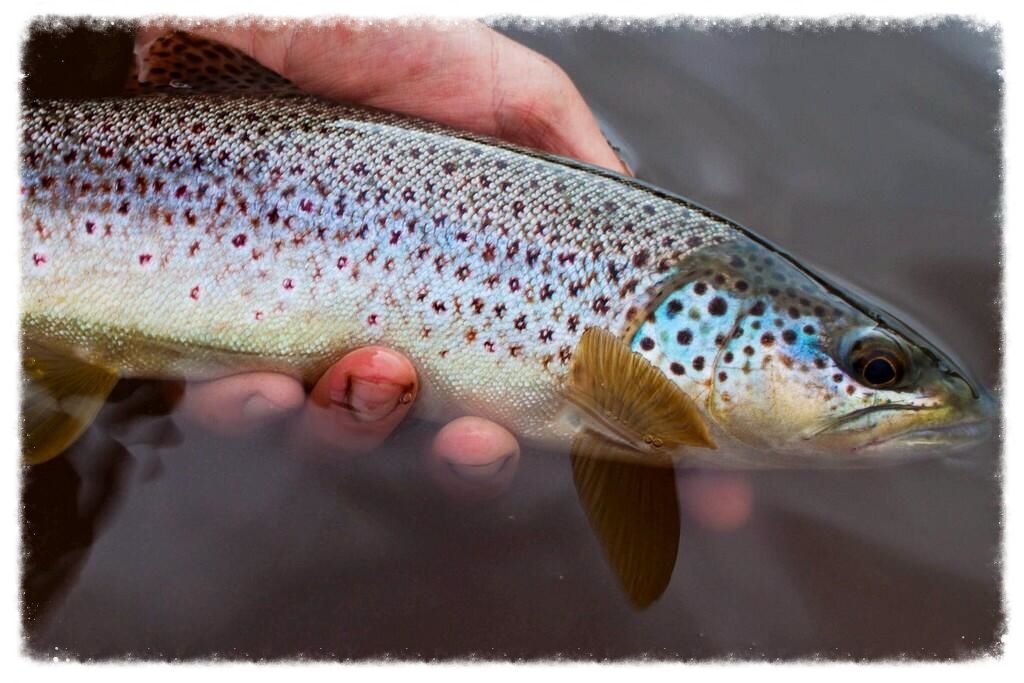 |
| Monnow blues |
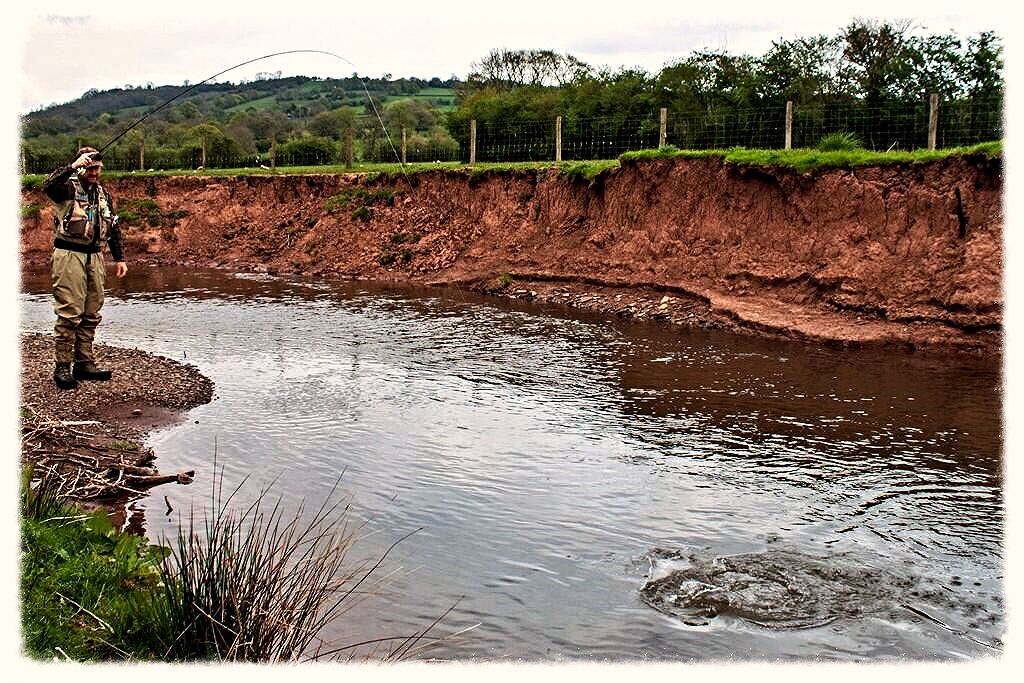 |
| Playing a Monnow trout |
By mid-afternoon, while Dave was off searching for kindling to light his barbecue, I enjoyed a beer and took stock in the quiet of the valley.
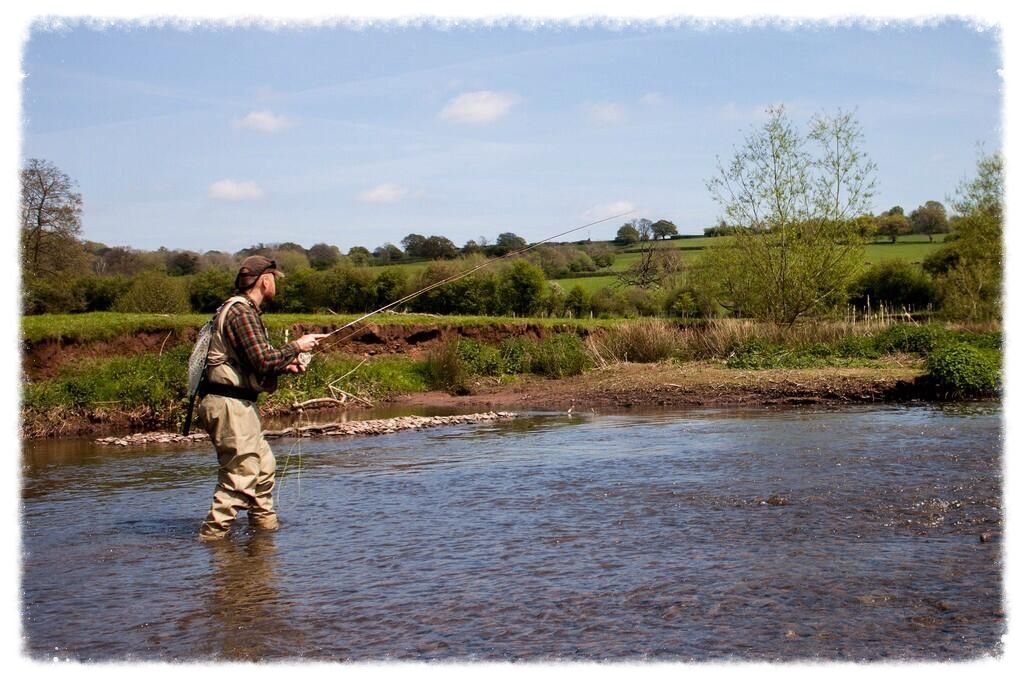 |
| The careful approach - the fish was lying in the slack water on the left |
 |
| The fight |
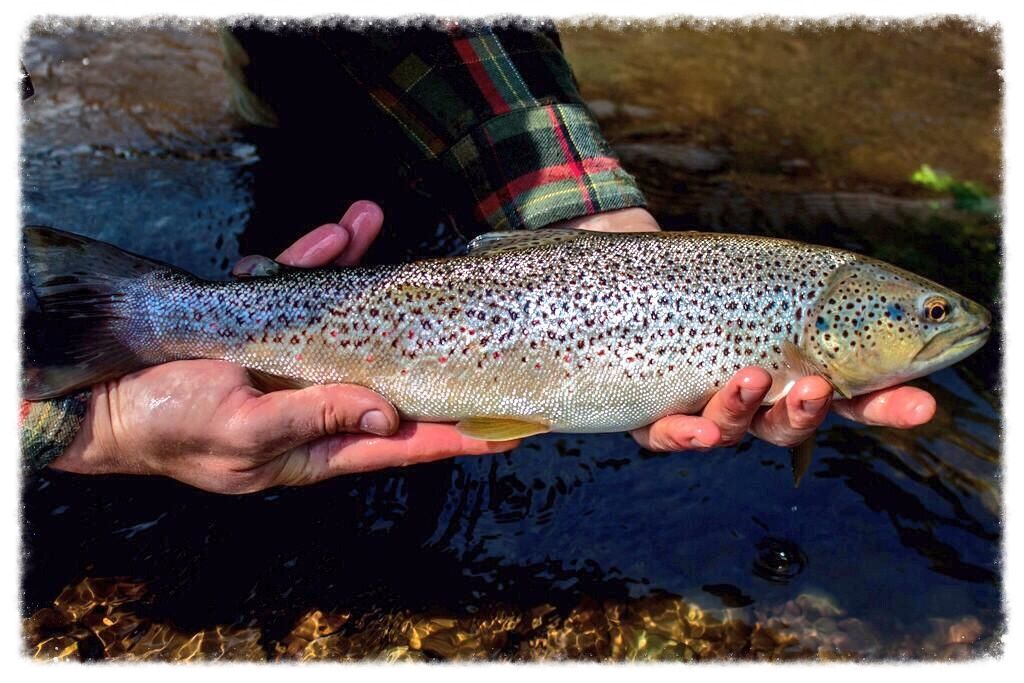 |
| The prize - 17 inch Monnow beauty |
Brushing my teeth that morning I noticed a female LDO spinner on the bathroom mirror. Was this a sign of things to follow that day? I suspected not. Dave and I anticipated a hatch of Large Brook Duns (LBDs). This proved to be the case with fish targeting the emerging duns in the faster water.
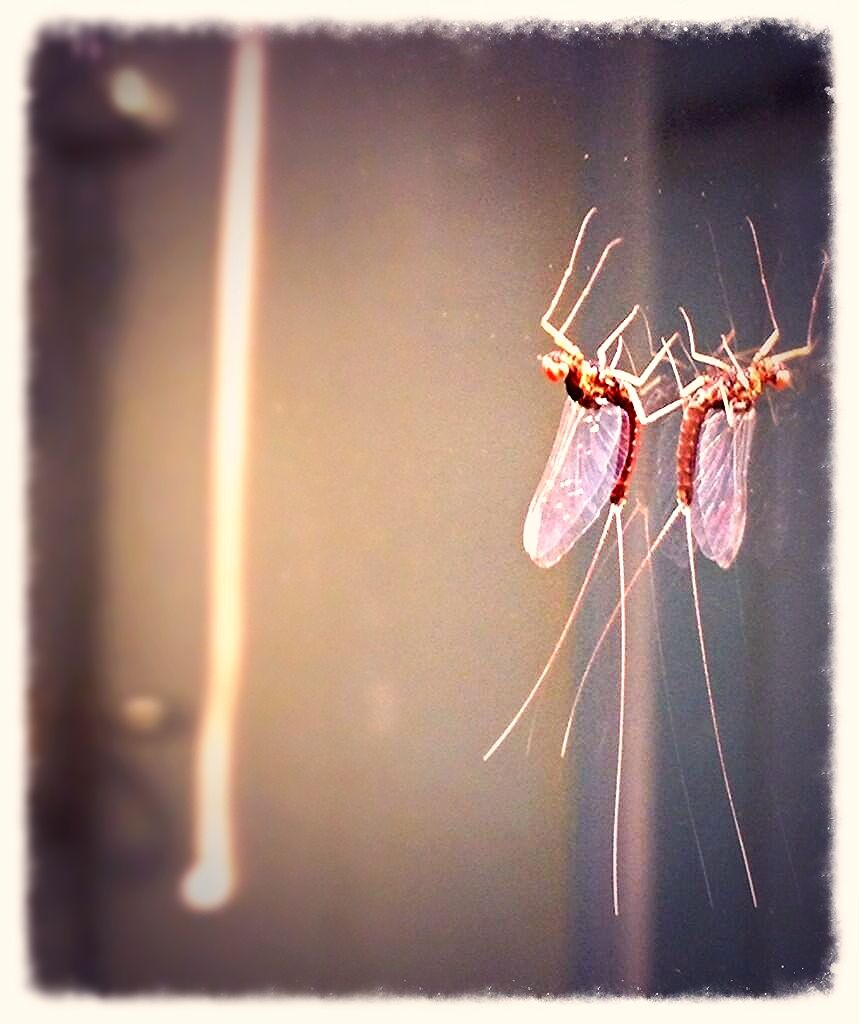 |
| Reflection |
We had taken it in turns to cautiously cast to those we spotted. Most of the surface feeders were taken on a size 14 pearl butted Wyatt's deer hair emergers (DHEs), one of my favourite flies for this time of year.
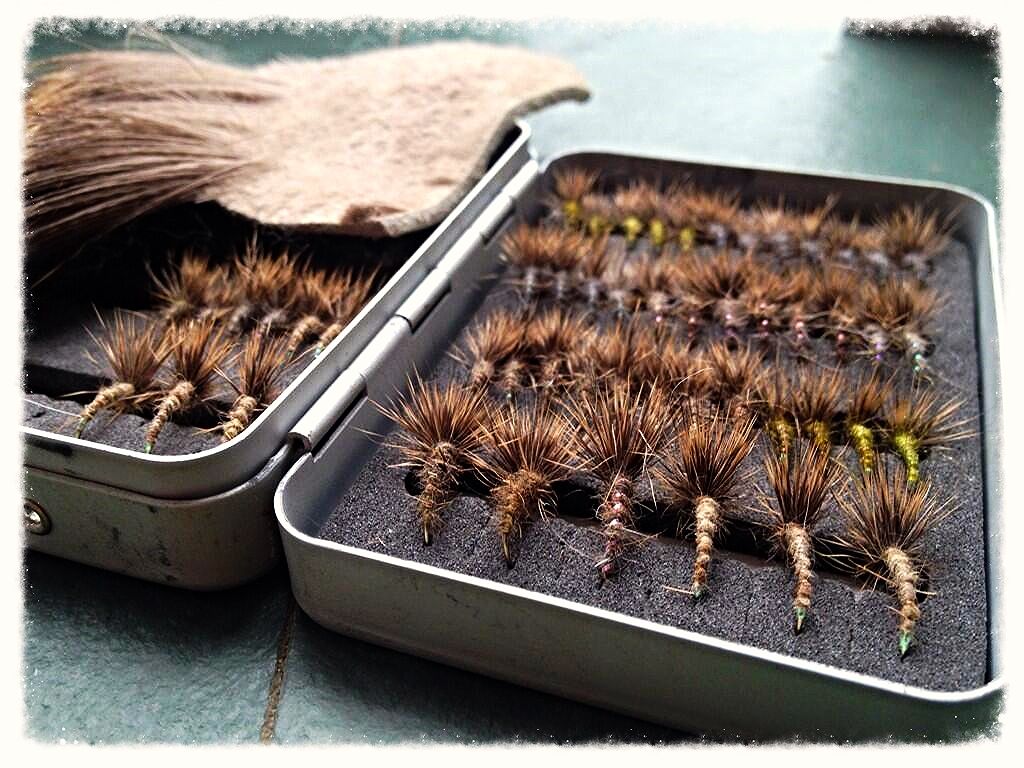 |
| Wyatt's DHEs |
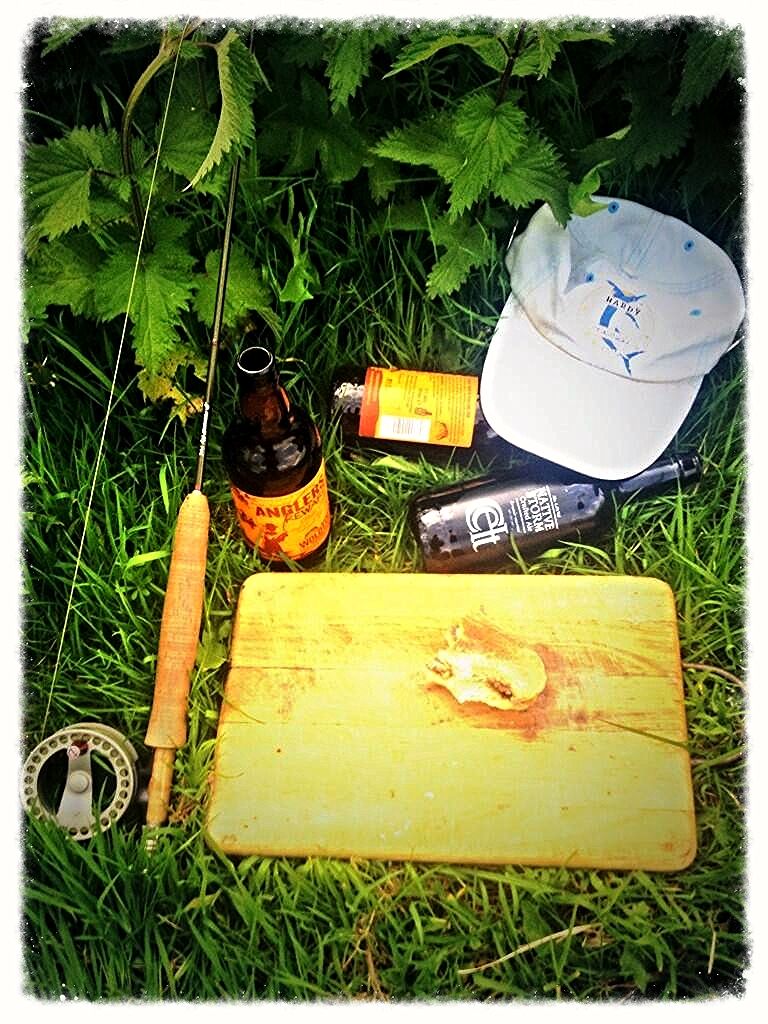 |
| Healthy lunch |
Monnow Rivers Association (MRA)
A Potted History:1998 - The DEFRA funded River Monnow Project commenced, and created the Monnow Fisheries Association (MFA) (now the Monnow Rivers Association) to improve the capacity of the river to support wild trout, grayling and other wildlife. Partners included the Game Conservancy Trust, the Wild Trout Trust (WTT), the Farming & Wildlife Advisory Group (FWAG) and local farmers.
1999 - A detailed survey of river habitat of the upper Monnow catchment identified important wildlife habitats and the extent of degradation resulting from livestock access, and quantified issues resulting from unmanaged bankside alders. The project offered farmers a programme of stock fencing and coppicing of bank-side trees and included a 10 year monitoring programme.
2003 - The first coppicing season commenced and continued annually until completion of the project in 2006.
2006 - The team continued to work with the Wye and Usk Foundation and farmers to adjust farming practice to reduce siltation in spawning areas, improve fence maintenance and ensure re-coppicing of riverside trees.
2010 – The MRA initiated the ‘Going Native’ programme to maintain and expand habitat management and eradicate invasive species such as mink, signal crayfish, Himalayan balsam, Japanese knotweed and giant hogweed.
Key achievements:
- The River Monnow Project:
- Largest ever river habitat restoration project aimed at improving the stocks of brown trout and grayling (£1.5M and countless man hours)
- Defra funding (£1.1M) was a record for such a project
- No comparable project had been as comprehensively monitored or involved as many partner organisations
- Met or exceeded DEFRA targets
- Improved the fishing quality and enhanced the value to farmers and landowners
- Eradicated mink and Himalayan Balsam
- Water voles were reintroduced to the River Dore (Monnow tributary)
On-going work of the MRA:
- Volunteers monitor and trap mink that enter the Monnow catchment
- Active participation in the Anglers’ Monitoring Initiative (monitoring fly life)
- 'Going Native' continues to reintroduce important native species such as water voles, white clawed crayfish and ranunculus
- Continued marketing to increase the number of anglers visiting the river
- Engagement with local schools through the WTT’s ‘Mayfly in The Classroom’ project
- An annual auction and ‘The Monnow Social’ fund raising event
The late Peter Lapsley fully describes the achievements of the Monnow Rivers Association (and two of the people behind it) in his excellent FF&FT article ‘Men of the Monnow’ (February 2012 issue).
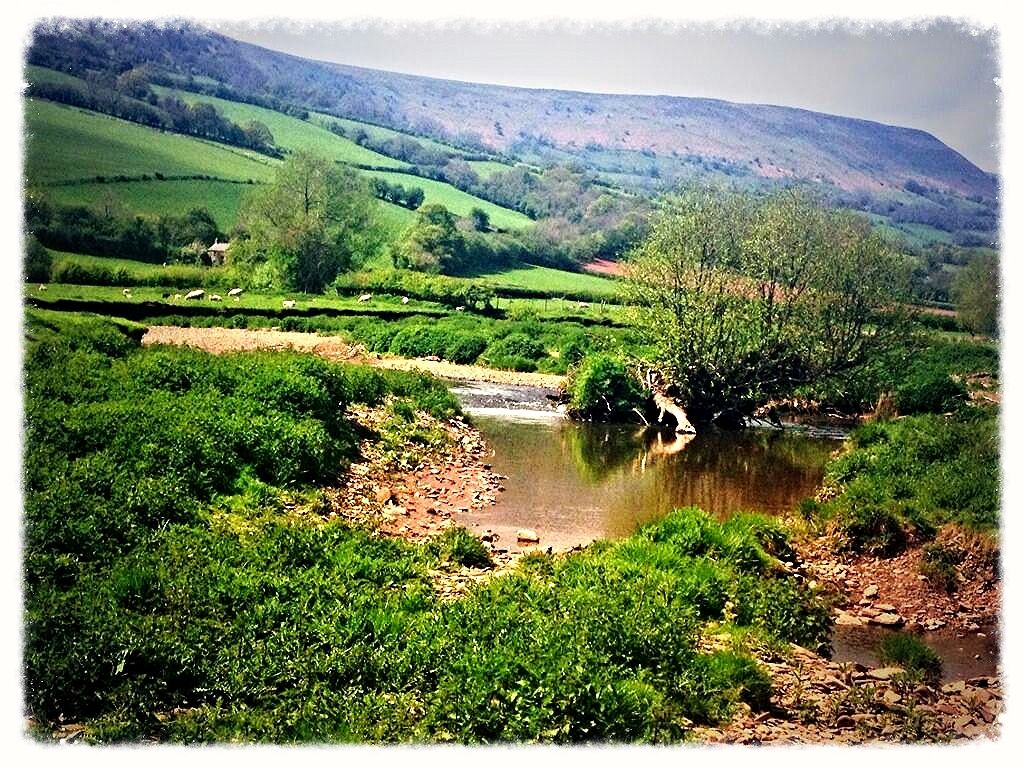 |
| The quiet Monnow Valley |
The Monnow Social, 9th - 11th May
 |
| Longtown camping |
Escley Magic
The forecast for the weekend was worrying with strong winds and heavy spells of rain predicted. I turned up early on a showery Friday afternoon with the intention of fishing one of the local brooks. After setting up camp and catching up with fellow Merthyr boy Gareth (who ties some of the best flies), I had the pleasure of watching Geraint land a lovely pounder from the slightly coloured Escley Brook at the bottom of the field.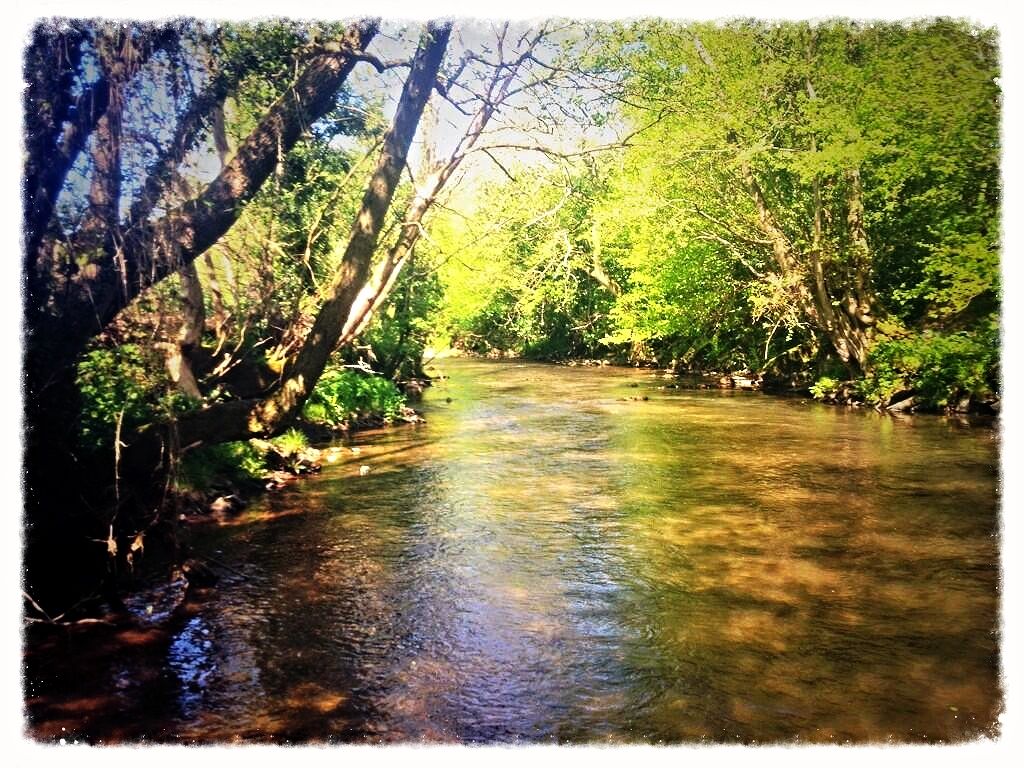 |
| The tranquil Escley Brook |
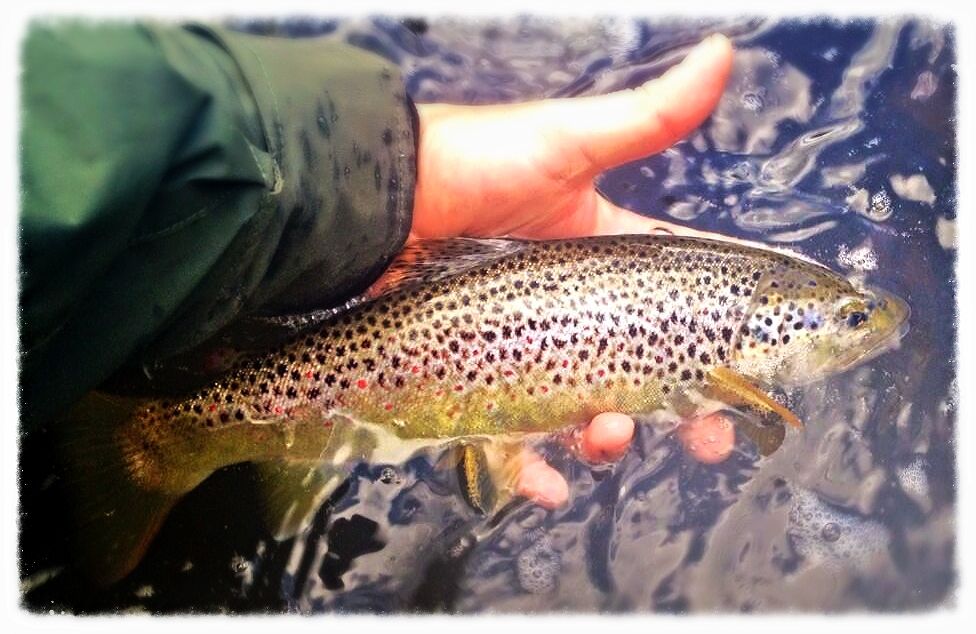 |
| Escley trout |
The Raspberry
It was with bleary eyes that I enjoyed a cooked breakfast in the main tent on the Saturday morning. I expressed my concern that the main river would be colouring after the overnight rain. Those more familiar with the Monnow reassured me that I was being an old woman. I was delighted to learn that I would be on a lightly fished beat of the main river below Kentchurch and would be joined by Kris Kent.We had a cracking day.
As ever the fishing was challenging but the trout came steadily. Kris was easy company as we took it in turns to target rising fish or work through runs.
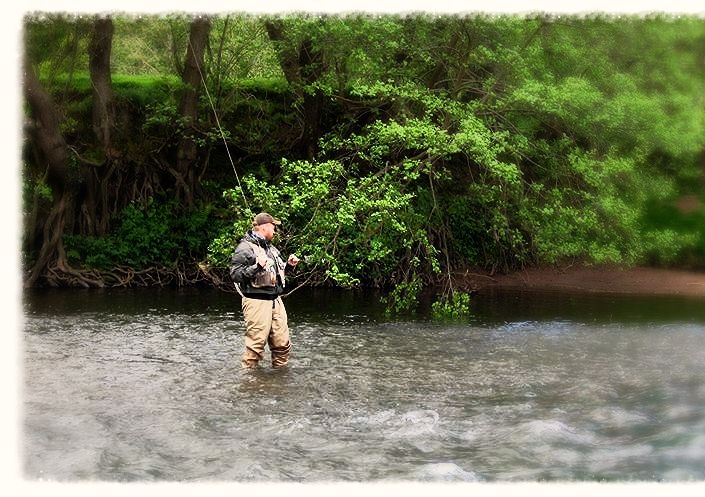 |
| On the Edge - a number of fish were lying in the back water beneath the tree |
 |
| There was an 8 inch trout behind the log |
The largest fish of the day was landed by Kris and I was clearly over the moon to net and return it for him.
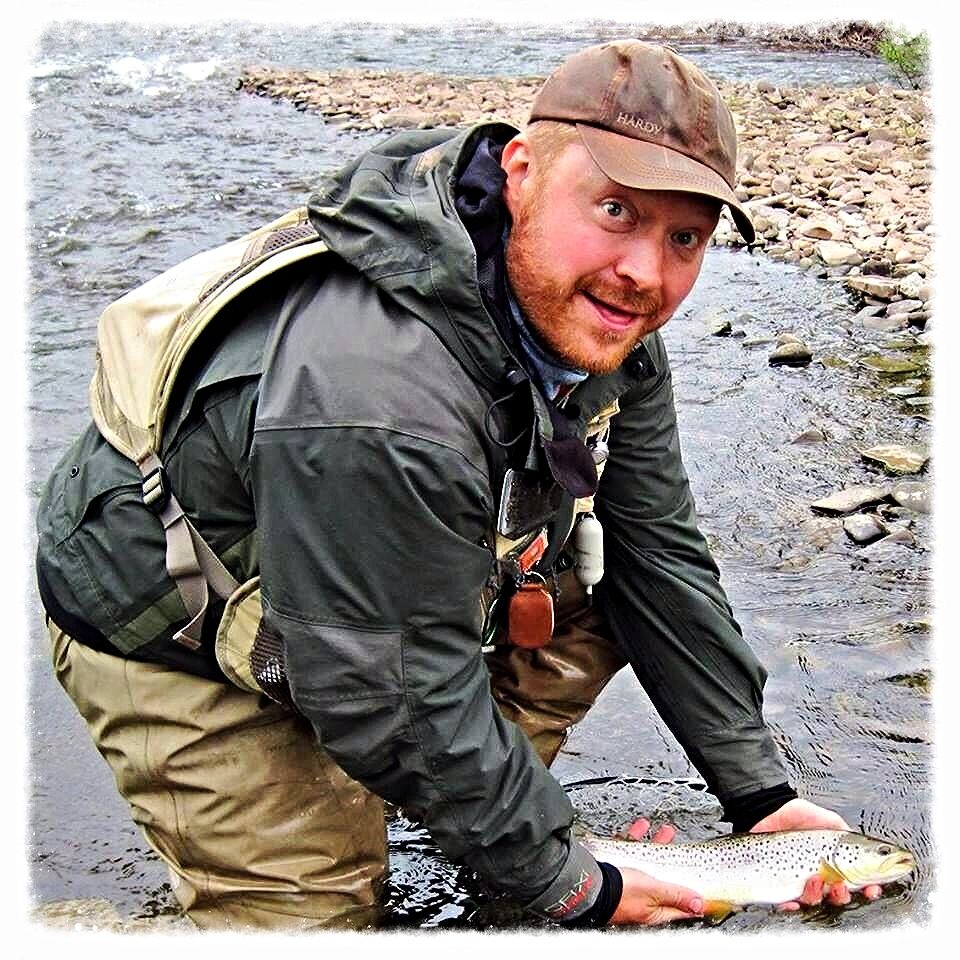 |
| My special fishing face |
 |
| Kris' 16 inch Monnow trout |
Kris caught most of his fish on dries whereas I caught around half of mine on nymphs, mainly in the morning. In the early afternoon we arrived at a pool that held two rising fish. It was Kris' turn and he efficiently hooked and landed the first, although the return wasn't as polished.
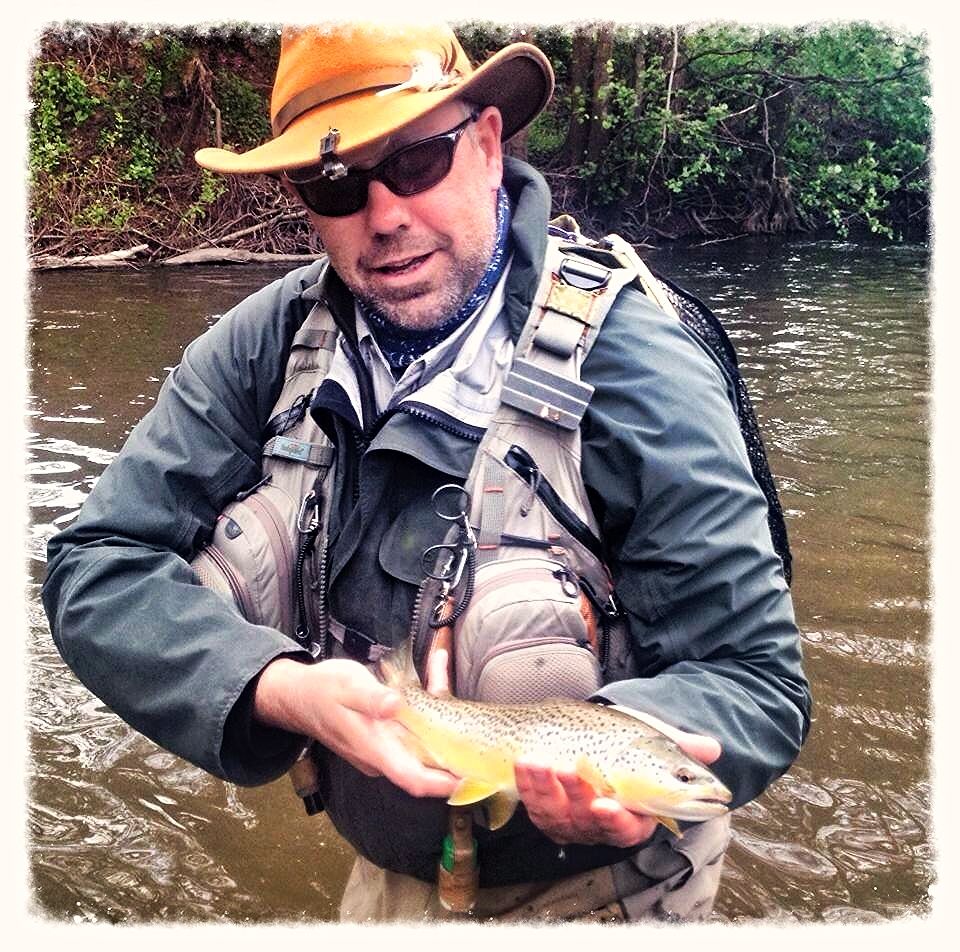 |
| At 6'4'', Kris 'making them look small' |
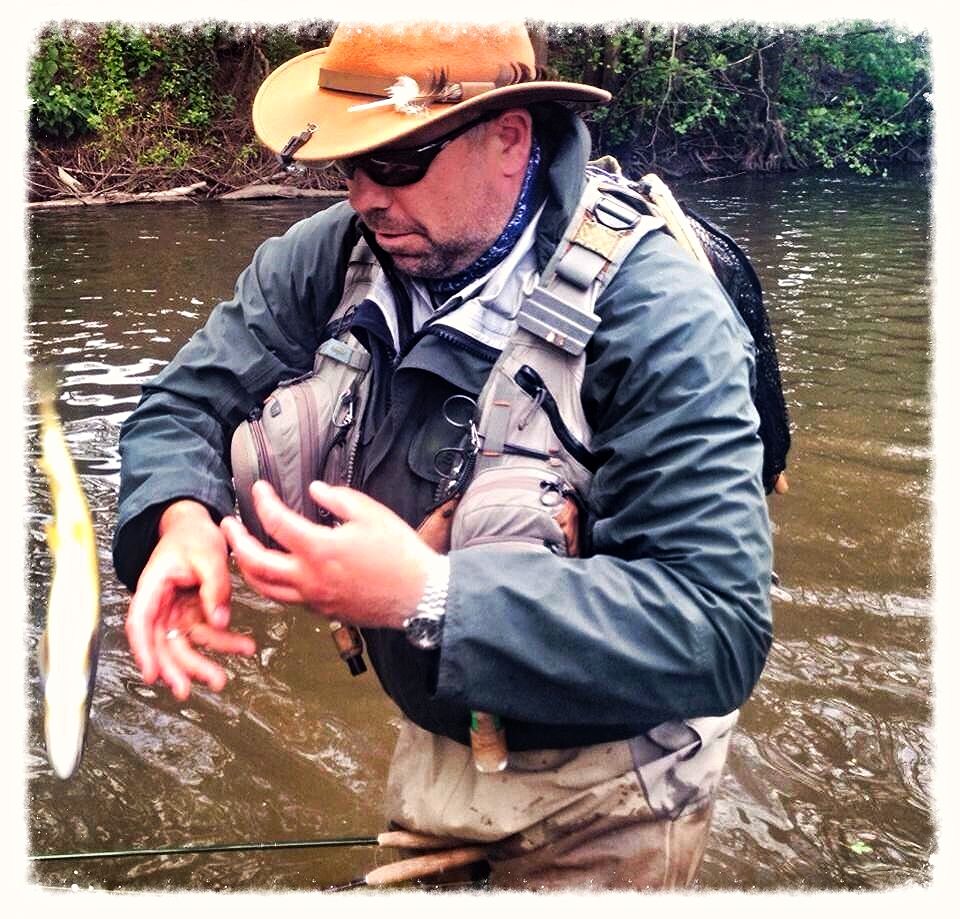 |
| Caution: slippery when wet |
The second fish looked big and was bubbling away in a back eddy in front of a protruding root. The position meant that if the trout didn't take my olive emerger then I would either have to lift off quickly and spook the fish or pull it slowly and risk hooking the root. With a wry smile, Kris settled down on the bank - he expected to be there for some time.
My first attempt resulted in a connection, unfortunately, with the root. Tying on a new tippet and fly gave the fish enough time to start feeding again. The second attempt went exactly the same way, as did the third. I'm ashamed to say that feeling a bit like Robert the Bruce's spider I was tempted to come back to my nemesis after lunch.
As I was tying another leader, a patient Kris - who, by now, had opened a beer - noticed the fish take a mayfly dun. The first we'd seen all day.
The fourth cast was made a good half an hour after the first and my Procter mayfly emerger was confidently accepted. That it wasn't as big as we'd thought didn't matter one bit; I was very pleased to have caught a difficult fish.
After lunch Kris and I spotted a rise in some slow water. I cast a few times and elicited no response. As it didn't rise again, Kris walked upstream to look for more surface feeders. A new fish then rose downstream of me in the main current. I collapsed my cast and, as I lowered the rod tip to maintain drag free drift, a large burgundy-looking mouth engulfed the fly. Immediately, I knew I was connected to a very good fish (or a 'raspberry' as they are referred to on the Monnow) and I shouted for Kris who, unfortunately, was out of earshot.
The fish ran hard downstream towards a stand of willow on the near bank. With two thirds of my line off the reel and the rod high above my head I applied side strain before it made the roots. This proved futile and, as I watched the rod arc and the fly line tighten over the water, I felt that horrible sudden release of pressure as my 6x copolymer snapped. I'd lost two very big fish in two weeks and wasn't even in that contest. Another 'raspberry' blown.
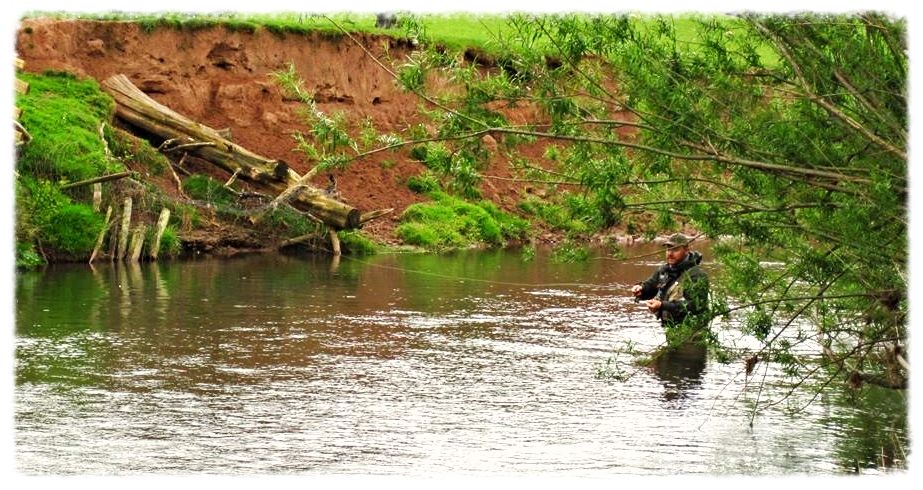 |
| Calm before the storm |
It was with a face like a fighting man's posterior that I walked upriver to show Kris the two stubs where the tippet had snapped below my tucked blood knot (where it goes through the eye of the fly).
That evening Kris informed that I had looked like I was going to cry. Noting Morgan's comment that I should stop taking things so seriously, I drank deep.
LBD Heaven
At breakfast, after a long and hilarious evening that included the brilliant Monnow Social Auction, I was informed that I would be accompanied on another lightly fished upper main stem beat by Dorset duo John and Ian. Again, I'd got lucky.Dave showed us the beat and by the late morning I was using duo tactics to tempt several fish, all over 10 inches. As very few were rising, John was also nymphing but Ian had caught a trout of over a pound and a half on the surface.
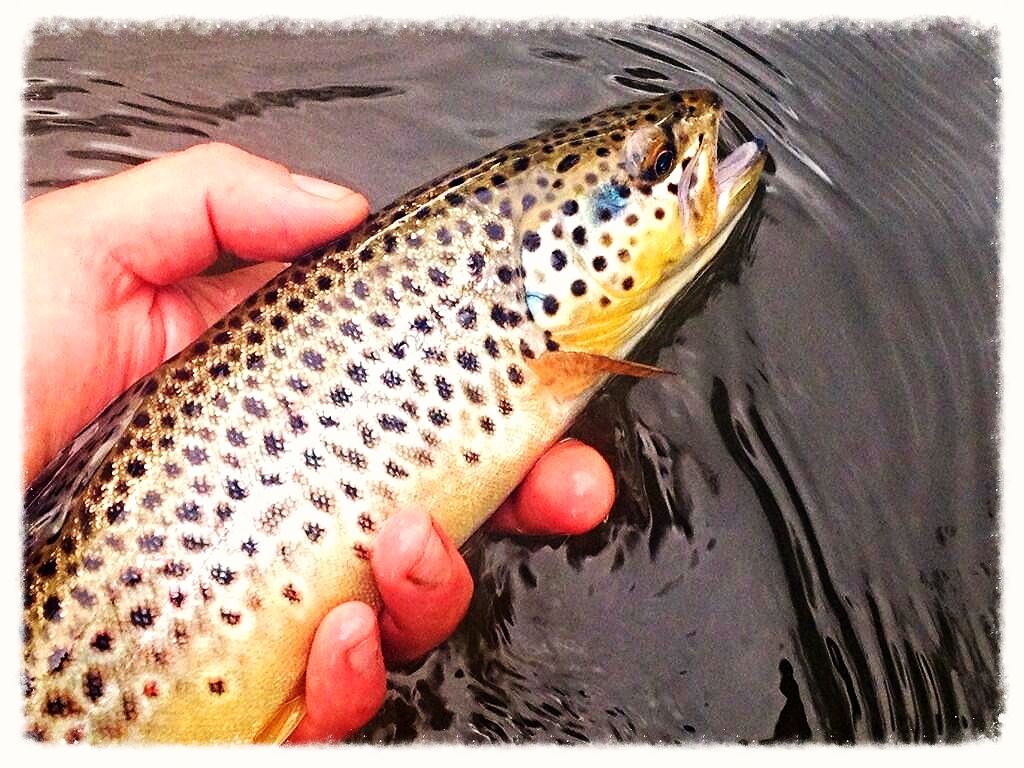 |
| Well marked Monnow trout |
In the early afternoon the LBDs began to hatch. Knowing that the fish nearly always respond, I changed tactics. The hungry trout readily accepted my DHE, until I came to a tree lined stretch where (by now) rafts of LBDs were sailing into small back eddies formed by roots of alder and willow, and where feeding fish lay in wait.
The eddies were small so I had to land the fly quite close upstream of the fish. A dun pattern (pictured in my last entry) was better suited to this tactic and stage of the hatch.
I picked off numerous fish while marvelling at the average stamp. The trout were comparable to those caught on a good day on the Usk.
At the top of the run, in the first small back water, I cast to a dimple rise. My target took first time and, as I'd just had some practice in turning these fish from the roots, I manoeuvred it into open water. I slid the net under the 18 inch trout and observed the broad silvery form of a fantastically conditioned fish. Not quite a 'raspberry' but just as memorable.
 |
| Return on investment - an 18 inch Monnow LBD feeder |
With the run fished out (for now), I walked upstream to find my companions and was very pleased to see Ian and John catch a number of good fish on LBD and mayfly patterns.
Sitting on the bank, I heard a familiar, barely audible sound. I watched the main bubble lane and noticed the occasional LBD almost disappear. There was a big fish sipping duns or, as my mate Aled would say, "giving them a sws" (a little Welsh kiss).
I took a few deep breaths and cast. The fish rose and I struck fresh air. I sat there for another thirty minutes and it didn't resume feeding; I'd spooked it. After that I returned every half an hour but didn't see it again. If I ever get invited back (CLANG!) then that's the first pool I'll be heading for.
The persistent hard work undertaken by the MRA to improve this unique river is clearly reflected in the four days of excellent fishing described above. In this case, we all get out what they put in.
*Thanks to Dave Smith and Kris Kent for a few of the shots above
Sitting on the bank, I heard a familiar, barely audible sound. I watched the main bubble lane and noticed the occasional LBD almost disappear. There was a big fish sipping duns or, as my mate Aled would say, "giving them a sws" (a little Welsh kiss).
I took a few deep breaths and cast. The fish rose and I struck fresh air. I sat there for another thirty minutes and it didn't resume feeding; I'd spooked it. After that I returned every half an hour but didn't see it again. If I ever get invited back (CLANG!) then that's the first pool I'll be heading for.
Just Desserts
I was born on May 10th and had a superb birthday weekend both fishing and socialising. The Monnow catchment is one of the best managed in the UK and it was a privilege to pursue such quality trout in the serene valley.The persistent hard work undertaken by the MRA to improve this unique river is clearly reflected in the four days of excellent fishing described above. In this case, we all get out what they put in.
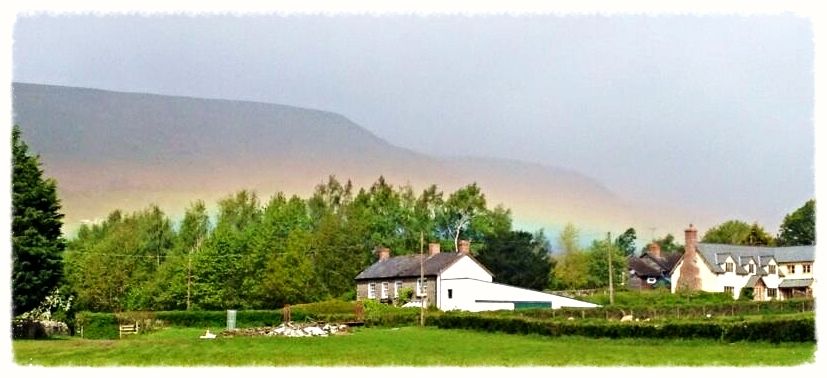 |
| Monnow Valley rainbow |
*Thanks to Dave Smith and Kris Kent for a few of the shots above

Thanks, Lee
ReplyDeleteYou're welcome on the Monnow anytime (but leave those nymphs at home!)
Thank you very much. See you soon.
ReplyDeleteGreat write up Lee!
ReplyDeleteCheers Nicholas. As you will have gathered, the fishing was very good indeed this year.
ReplyDelete